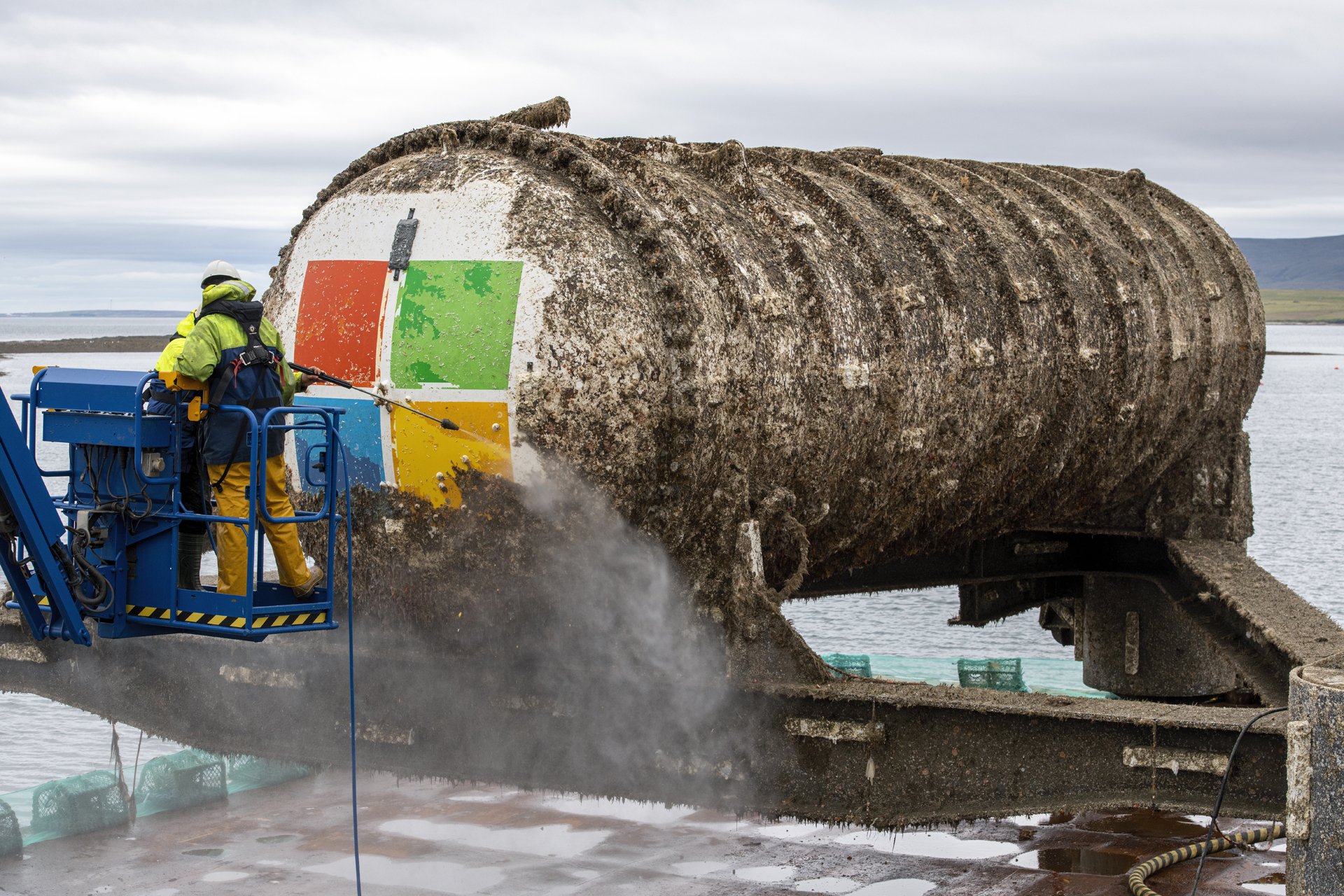The frigid underwater conditions of the sea might be perfect for datacenters.
What you need to know
- Microsoft retrieved a datacenter that was placed underwater over two years ago.
- The datacenter had one-eighth of the failure rate of datacenters on the ground.
- The project is part of Microsoft's Project Natick.
Back in 2018, Microsoft sank a datacenter into the Scottish sea. Now, over two years later, Microsoft shared its findings from its undersea datacenter experiment. Marine specialists retrieved the barnacle-covered datacenter out of the Scottish Sea to determine how the datacenter faired in the icy depths.
The effort is part of Microsoft's Project Natick, which is a research effort that looks into the feasibility of underwater datacenters.
While humans require oxygen, appreciate temperature changes, and enjoy the world shifting from night to day, computers have different needs. 117 feet below the surface of the Scottish Sea, the Northern Isles datacenter sat for two years without any oxygen inside and within a controlled environment. The datacenter is instead filled with dry nitrogen.
The datacenter was also apart from humans that might bump into components and other common causes of problems within datacenters. The cool temperatures under the water also help the datacenter run more efficiently.
Microsoft saw one-eighth of the failure rate within the ocean datacenter compared to one on land with the same components.
Despite modern travel convenience, more than half of the world's population lives within 120 miles of a coast. People at Microsoft believe that putting datacenters underwater near coastal cities can result in fast and smooth connections to the web.
The next phase for the Project Natick team is to determine if servers can be removed and recycled from the datacenters after they have reached the end of their lives.





0 comments:
Post a Comment